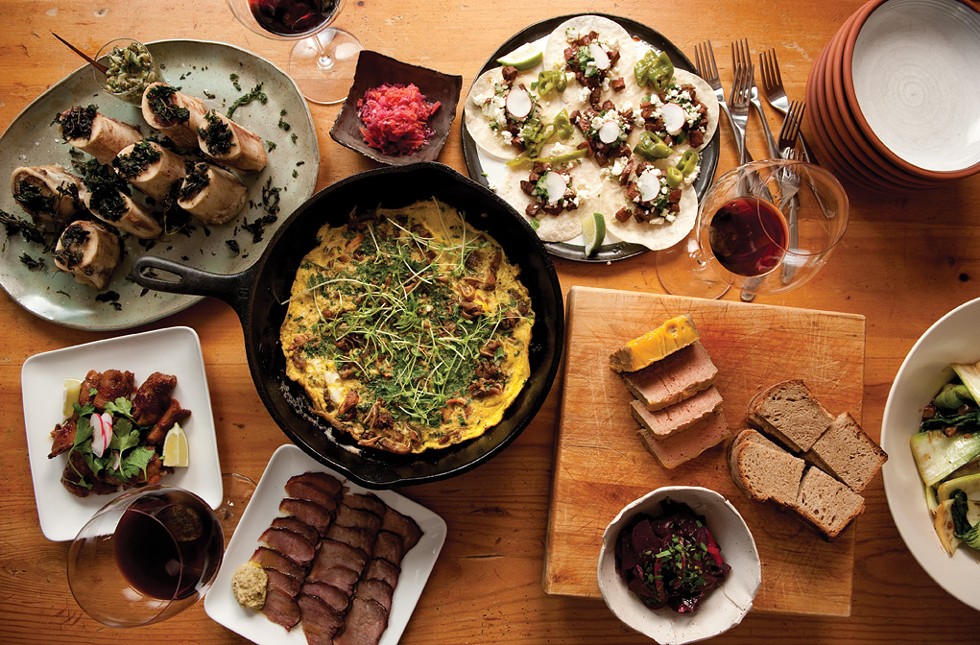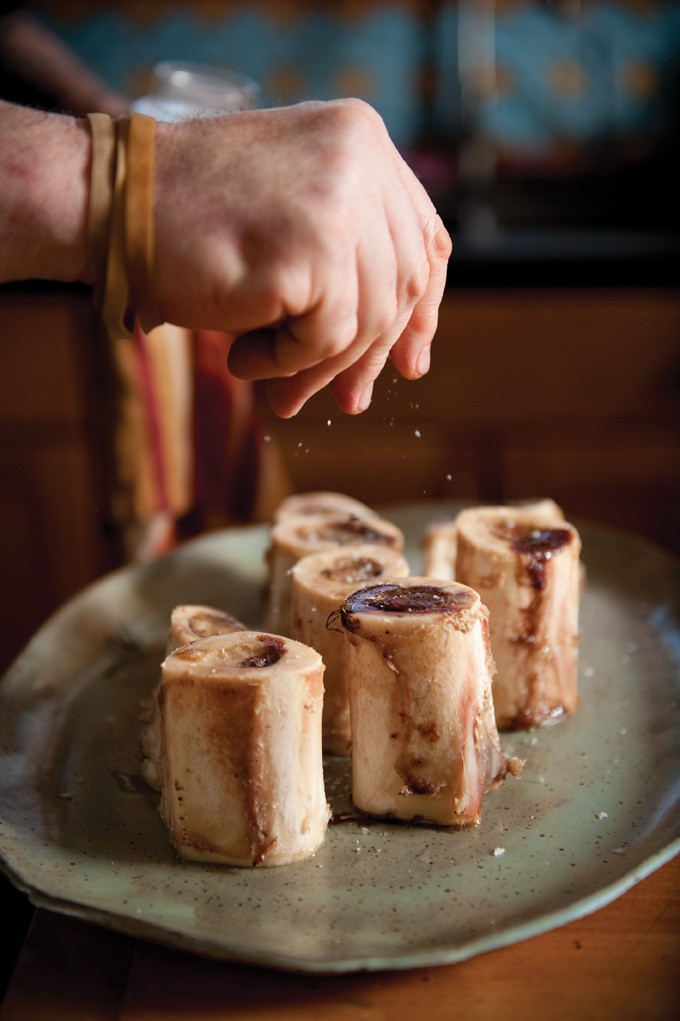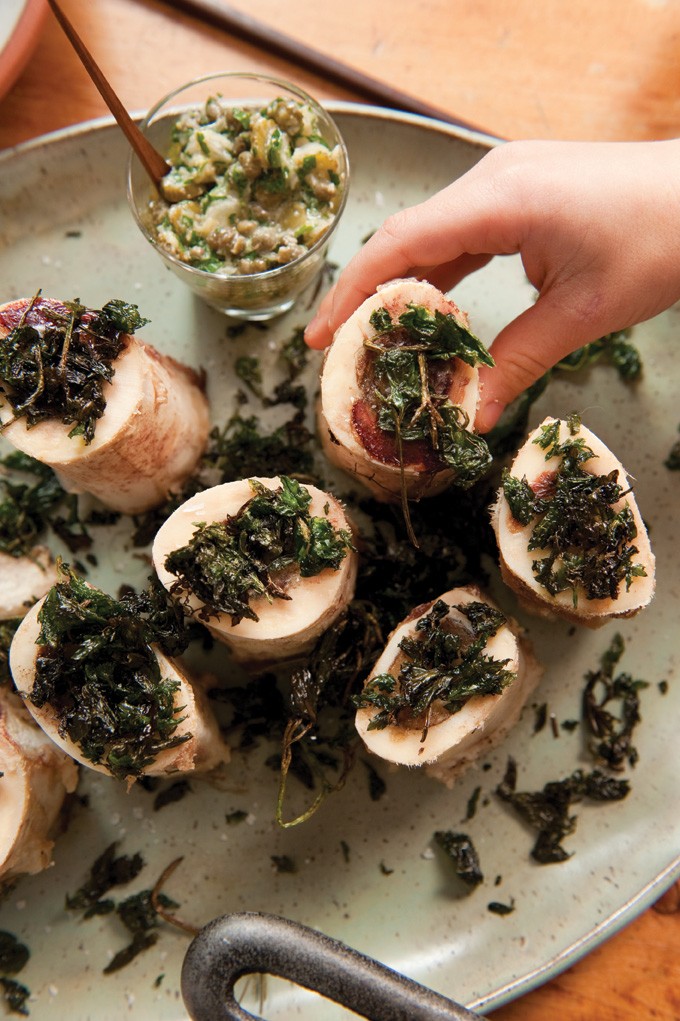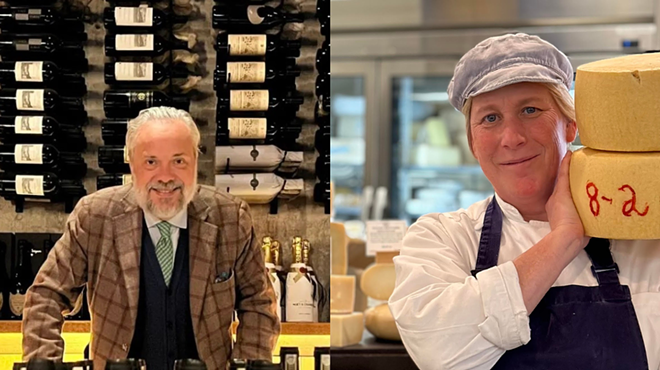Offal is an awful word. It's the opposite of appetizing. But the things it describes—organs, ears, tails, tongues, tendons, and the like—are some of the most interesting and rewarding foods there are. Depending on your ethnic background, you're probably already familiar with one or more offal dishes. Tongue sandwiches, menudo (beef stomach in broth), chitterlings, beef tendon soup, liverwurst, steak and kidney pie—chances are you already love something offal. It's meatier. Deeper. (Sometimes) fattier. You can't get that flavor anywhere else. And there's so much more.
Chef Rich Reeve is a man who knows his way around esoteric animal parts. At his last endeavor, beloved Kingston establishment Elephant, his globetrotting tapas menu regularly included terrines, tacos, stews, and pâtés made from organs and offcuts. (Don't worry you'll soon be able to eat his food again at the soon-coming Rhinebeck restaurant Bia).For Reeve, as for many others, his conversion to this kind of food came in the form of English chef Fergus Henderson's The Whole Beast: Nose to Tail Eating (Ecco, 1999). It's a poetically written little cookbook that has been hugely influential. "The way he wrote, the way he sounded—I got excited," Reeve remembers, and he hasn't looked back.
Reeve says that there are only two things about meat that matter: "You need to know where it comes from and you need to eat the whole thing. As carnivores, we owe it to the animal and the people who raised it properly." And this notion, still a matter of clear necessity in much of the world, is now regaining traction in our country as an ethical, sustainable, and damn tasty way to eat meat. "It's where the new flavors are," Reeve continues. "It's the new frontier." So who better than he to be our guide to whole-beast cookery? I invited Reeve to come over and cook a variety of unconventional cuts to show how easy and how good they can be to make at home. Some body parts like brains or tripe may be too challenging for some people to imagine eating, so we limited ourselves to user-friendly things that make for extremely good eating.
A cow's heart may look daunting, but prep is simple. Cut it open, trim away everything that isn't deep red, and then cut the meat into half-inch strips or cubes. Grill or sautée the heart just to rare, and serve as tacos with hot salsa, queso fresco, cilantro, and crunchy radishes. The meat could also be marinated and threaded onto skewers to great effect. It's intensely beefy and tender: steakier than steak. Reeve recently served raw heart at a large event, and people loved it, though he waited to tell them what they had eaten until after it was gone. And that's revealing; any aversion we might have to eating these foods is cultural, not gustatory.
The key to good pig ears is long, slow cooking. In this case, Reeve instructed me to confit them beforehand, so I submerged them and a couple of tails in duck fat in a 180˚ oven overnight. They came out tender and lip-smackingly sticky with gelatin. Reeve sliced them into ribbons and quickly fried them into a crunchy tangle of porky goodness, arranging them in an iron skillet with chanterelles and pouring beaten eggs over the lot to set into a frittata that he topped with parsley and pea shoots. The tails got a quick sautée with some fiercely hot barbecue sauce before going on a plate with cilantro and lime wedges.
Marrow bones should be soaked overnight in water (which can be salted and flavored with herbs, if you like) and then roasted just until the marrow puffs up a little and gets bubbly. Don't overcook it or it will melt away. For some herbal acidity to counter the fatty bones, we whisked up a sort of gribiche (mayonnaise-style) sauce made from cornichons, capers, parsley, nasturtium seed "mustard," vinegar, and olive oil. Parsley leaves were fried for a garnish. A quivering dollop of roasted marrow slathered on homemade bread with the piquant salad was as decadent a bite of winter fare as one is likely to find anywhere. If you try one thing from this article, make it roasted bones.
Reeve cubed some guanciale (pig cheek) that I cured a while back (see January 2009) and browned it in a wok before tossing in some pak choi. During the quick cooking, he tossed in hoisin sauce and some cider vinegar, then spooned the bright, glistening greens into a serving bowl. This approach highlights another way to use certain cuts; a couple of tablespoons of pork imparted a rich, meaty flavor to the greens and sweet-sour sauce. It's useful to remember that this is how much of the world eats their animals: as a flavoring agent rather than a big slab of muscle. On the other end of the spectrum, he also brought along a liver pâté that was a creamy, meaty joy with his homemade fig jam. Make your own pâté. Please. I had made cow-tongue pastrami and we noshed on it during the cooking.
It's important to be clear about this: Eating offal is not taking one for the team. It's not some kind of high-minded sacrifice we make to justify our carnivory. It is a celebration of the animals we eat, and our ticket to a world of extraordinary culinary experiences. Handled properly, nearly every part of our common food animals can be transformed into sublime morsels that will change the way you think about what you eat. The food world is full of trends, and it's easy to become jaded by the speed at which they change. But eating every part of an animal is not about fashion; it's about deepening our relationship to food and opening ourselves up to a much wider range of intensely pleasurable experiences. It also happens to be the right thing to do. And, as Reeve exclaims, holding a smoking pan of saucy crimson pig tails aloft: "I've done all the other stuff. This is cooking!"
ROASTED MARROW BONES
12 center-cut beef marrow bones 2" to 3" tall (one bone per person makes a nice appetizer, three make a more substantial dish)1 head of garlic, smashed
1 sprig rosemary or thyme
2 tsp extra virgin olive oil
1 tsp + 2 oz. coarse sea salt
1 bunch flat leaf parsley, cleaned and picked
1 lemon
1 sliced baguette, toasted
1 day ahead, soak bones in cold water (this removes excess blood)
Preheat oven to 350°. Remove bones from soak and pat dry. Place them in roasting pan with garlic, rosemary sprig, drizzle of olive oil, and a sprinkle of sea salt. Roast bones for 30 minutes or until marrow puffs up. Remove bones from pan and place on plates. Toss parsley with lemon and serve atop bones with extra sea salt and toasted baguette on the side.
CHICKEN AND PORK LIVER TERRINE
1 ½ lbs. chicken livers1 lb pork liver
1 lb ground pork
¼ C heavy cream
3 Tbsp orange marmalade
2 Tbsp port
2 whole eggs
1 ½ C flour
pinch nutmeg
salt/pepper to taste
Preheat oven to 300˚. Wash livers and cut into pieces. Combine all ingredients in a food processor and blend until smooth. Use a spatula to put the mixture into a lightly oiled terrine mold. Put the mold into a larger pan with enough hot water to reach halfway up the mold. Cover and bake for 80 minutes, or until the center of the terrine reaches 150˚. Remove from water bath and chill over night. To unmold, run hot water around the sides and then invert onto a plate or cutting board. Serve with toast, something pickled, and fig jam.
Recipes courtesy of Rich Reeve of Bia.



















